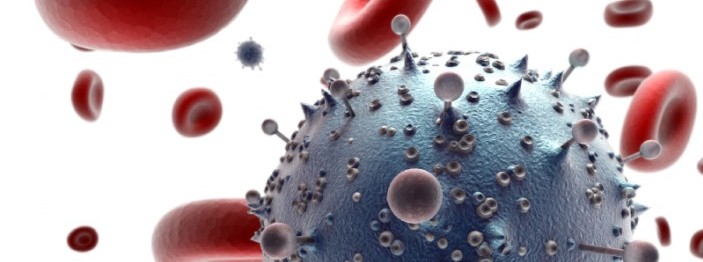New look at an old virus in multiple sclerosis
Researchers have long speculated that a virus is the initial trigger for the processes of inflammation and neurodegeneration seen in multiple sclerosis. While the usual suspect is Epstein-Barr virus (EBV, which causes mononucleosis), an intriguing idea presented at the recent European MS meeting is that the real culprit is a retrovirus (Gold J. ECTRIMS 2013; abstract 115).
Retroviruses are a family of viruses that contain RNA rather than DNA as their genetic material. When the virus infects the cell, its RNA is able to hijack the cell’s DNA to produce virus proteins. Normally, DNA produces RNA rather than the other way around. This backward process of RNA to DNA earned the virus its “retro” name.
Retroviruses have been around since the beginning of human evolution, and all of us bear the marks of their genetic fingerprints. Once of the more surprising discoveries of the Human Genome Project was that about 8% of the human genetic code actually came from viruses. So when our immune systems are trying to distinguish “self” from “not-self”, the line separating human and virus can be a bit blurry.
The most notorious retrovirus is HIV (human immunodeficiency virus). Since HIV/AIDS and MS are very different illnesses and are seemingly unconnected, you might expect that a people with HIV/AIDS would develop MS at the same frequency as other people in the general population. But when Dr. Julian Gold, an infectious disease specialist in Sydney, Australia, looked at this, he found that MS was extremely rare in someone with HIV/AIDS. In fact, a recent study looking at all patients in Denmark found only one HIV patient who subsequently developed MS (Nexo and colleagues. Epidemiology 2013;24:331-332).
So Dr. Gold turned to the UK’s National Health Service (NHS), which has the largest patient database in the world. Among the 21,207 people with HIV, only seven developed MS over a seven-year period. In comparison, in a similar population of people without HIV, there were 18 MS cases. In essence, having HIV/AIDS appeared to protect someone against developing MS. In fact, this protective effect against developing MS (62%) was about twice the size of the most optimistic estimates of the protective effect of vitamin D (Munger and colleagues. Neurology 2004;62:60-65).
Why would HIV infection protect someone from developing MS? Assuming this is a true effect, there could be any number of reasons for it. The one proposed by Dr. Gold is that people with HIV/AIDS are usually taking an antiretroviral therapy, and these drugs may be suppressing a viral trigger for MS. So he is launching a small study of an antiretroviral drug (raltegravir) to see if has an impact on disability in people with MS. Previous studies of antiviral drugs such as Zovirax and Valtrex, have not been effective in MS (Lycke and colleagues. J Neurol 1996;243:214-224; Bech and colleagues. Neurology 2002;58:31-36; Friedman and colleagues. Mult Scler 2005;11:286-295). But these drugs suppress herpes virus rather than retroviruses, so it may be that these early studies had the right idea but the wrong drug.
In support of the idea, studies have shown that MS lesions contain retrovirus proteins, and these proteins appear to stimulate local inflammation in the brain (Perron and colleagues. ECTRIMS 2013; abstract P355). This observation has prompted a phase II study of a new agent (called GNbAC1), a monoclonal antibody that will target the retrovirus protein found in MS plaques (Derfuss et al. ECTRIMS 2013; abstract P566). If a retrovirus is the elusive MS trigger, the hope is that suppressing it will extinguish the match that causes inflammatory flare-ups.
Share this article
Facebook Twitter pin it! Email
Related Posts
Back





